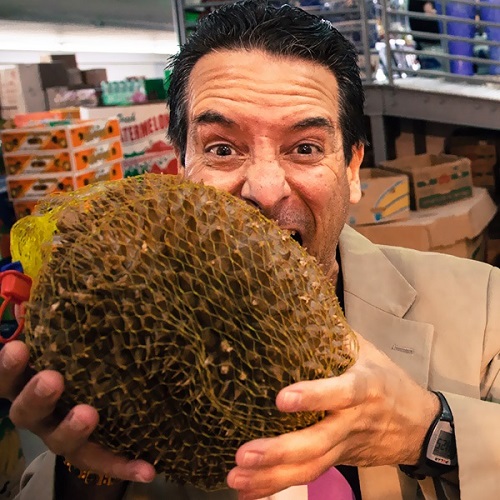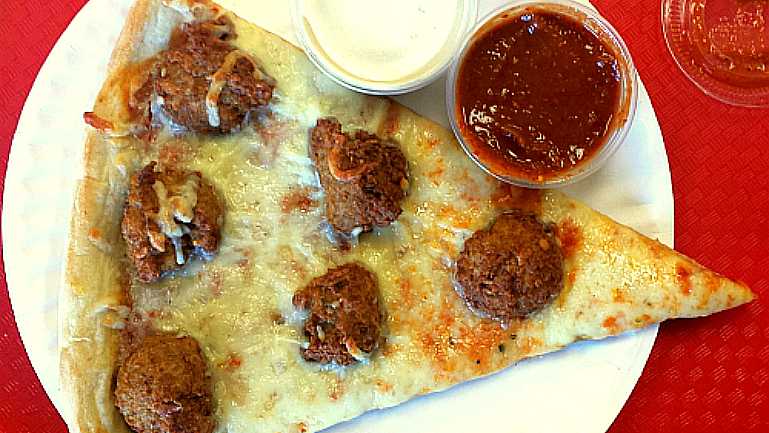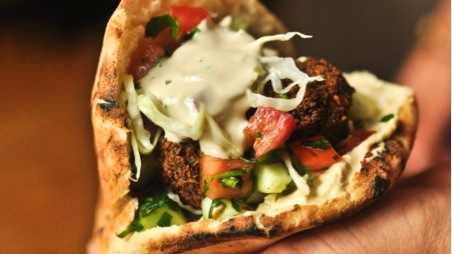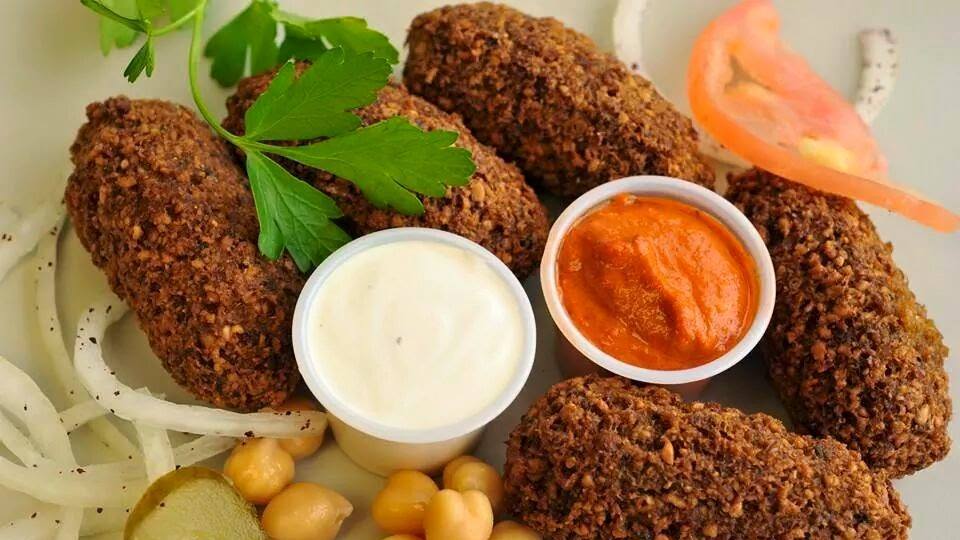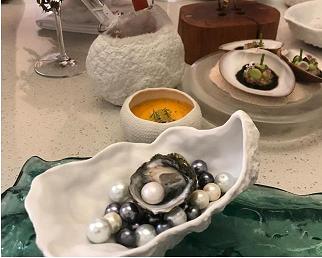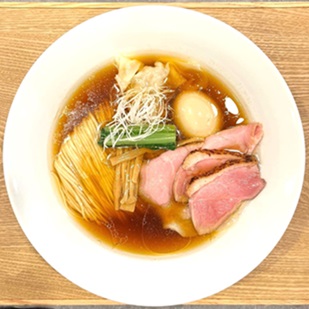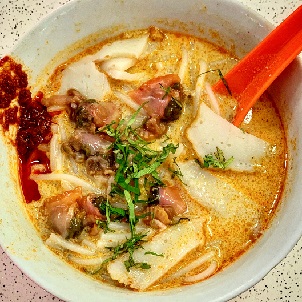4 Essential New York Falafels
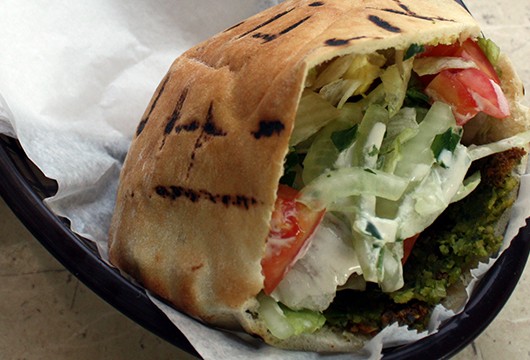
Falafel fans dress this Middle Eastern favorite in tahini and hot sauce. / Courtesy of Joe DiStefano
New York City is a mecca for this Mid-Eastern specialty
The first time I ate falafel it was formed by the hands of one Mamoun Chater, a Syrian immigrant whose West Village hole-in-the-wall near New York University lays claim to being the first of its kind in New York City.
Mamoun’s Falafel opened its doors in 1971. I have a distinct memory of eating there with my older brothers. I must have been about 10. We walked into the back of the narrow shop on Macdougal Street. “The counter guy’s kind of gruff, but it’s all part of the experience,” my brother, John said. “Just tell him you want a falafel with hot sauce and tahini.” And what an experience biting into the crunchy herbaceous morsels was. As Middle Eastern music played in the background, I felt transported. I’d never tasted anything like it. Nutty creamy tahini and fiery hot sauce rounded out the flavor explosion in a pita.
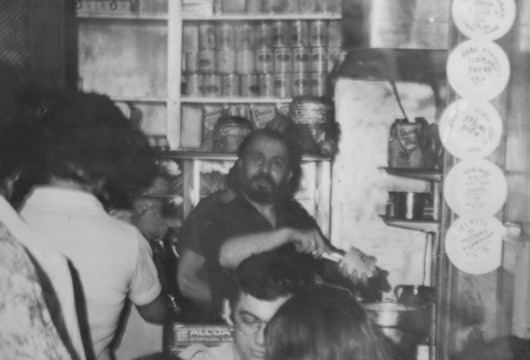
Mamoun's kick-started the falafel craze when it opened in 1971. / Courtesy of Mamoun's
Though there have been Arab Christians in the city since the early 1800’s who were doubtlessly eating falafel, longtime New York City food writer Robert Sietsema says it was Mamoun’s that kicked off the falafel craze in New York City.
“It spawned many imitators and made falafel a standard meal for ethnic-food seekers, vegetarians and the vegetable-friendly.”
Middle Eastern music still plays in Mamoun’s, but sadly the falafel sandwich is not what it used to be. While it’s tasty and cheap at $3, the pita is mostly filled with lettuce. That said, the hot sauce is just as fiery as I remember.
1. Falafel - Taim
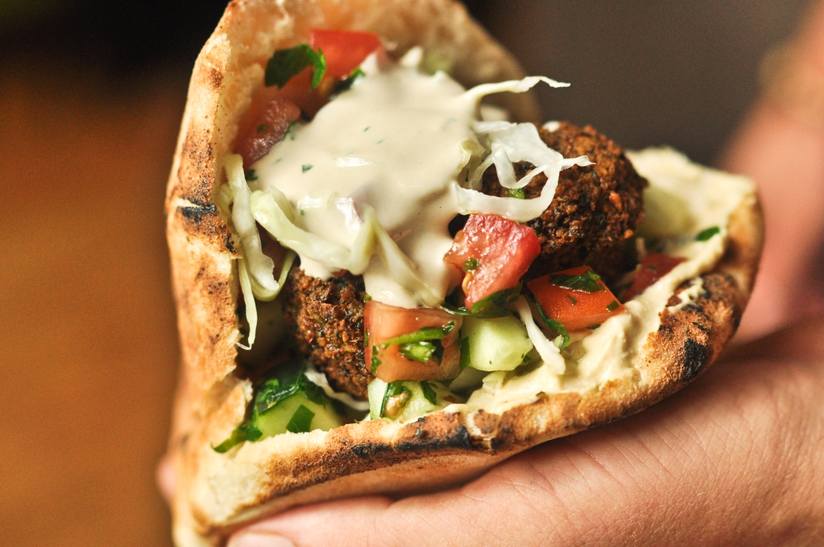
Tiam serves a gourmet take on Israeli falafel. / Courtesy of Tiam
A far better choice in the West Village is Taim, which serves a gourmet take on Israeli falafel. “Falafel became part of the counter culture food,” notes Rozanne Gold, renowned chef, author and international food and restaurant consultant. “It was cheap food, it was a little bit exotic and it felt political somehow,” she adds, noting that one of her favorite places to eat falafel was on St. Mark’s Place in Manhattan’s East Village.
In the 1990s St. Mark’s Place — the neighborhood’s Main Street — and the environs surrounding Tompkins Square Park were still peppered with Middle Eastern restaurants. The price of a falafel sandwich in a pita hovered around $2.50. It was a default meal, whenever I found myself in the neighborhood. One of my favorites, Cinderella Falafel, which is now closed, served a signature $5.50 sandwich as long as my forearm. It ate like a greatest hits of Middle Eastern vegetarian cuisine packing falafel, hummus, baba ghanouj, tabbouleh, chickpeas, lettuce, tomato, onion, and tahini sauce into a lavash wrap.
2. Falafel - The King of Falafel & Shawarma
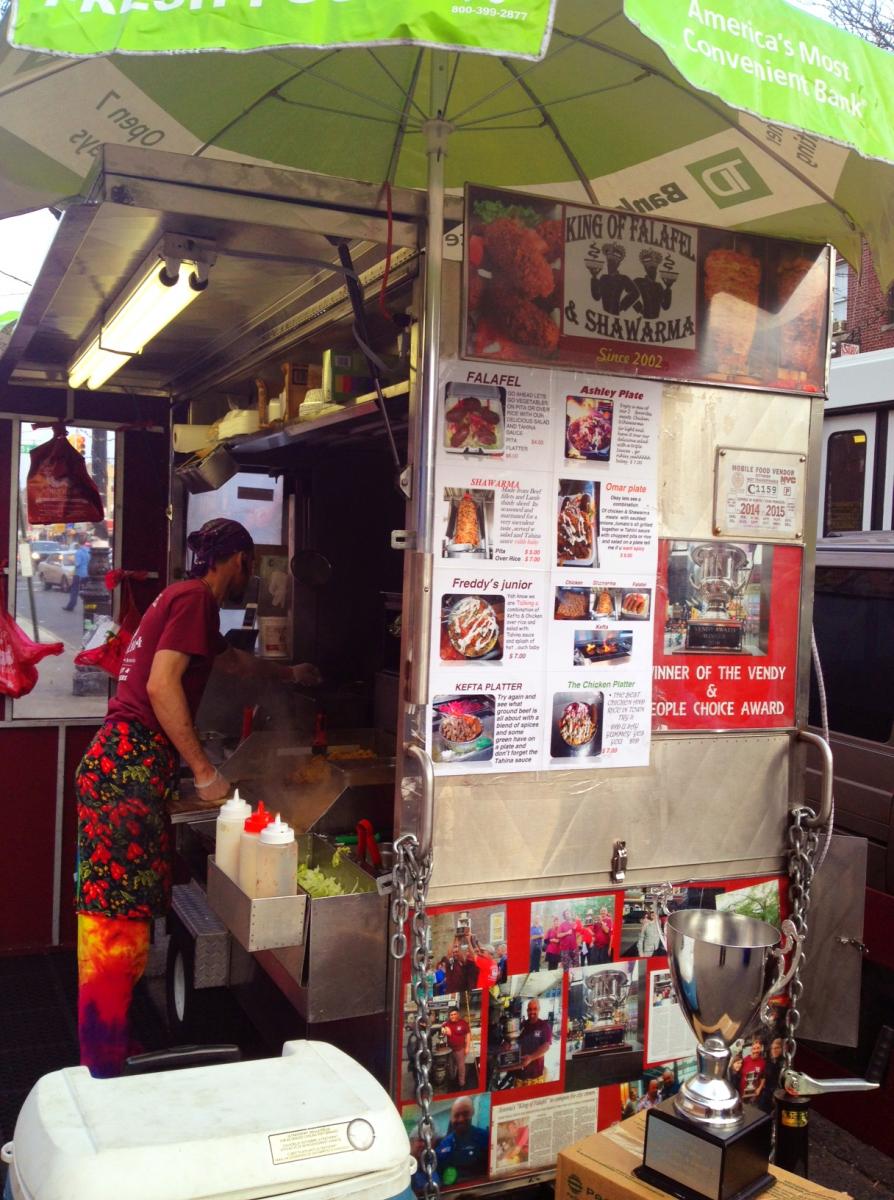
The King of Falafel and Shawarma’s cart on 30th Avenue. / Courtesy of tastoriaqueens.com
As of this writing, there are more than 700 eateries — ranging from humble carts and trucks to white tablecloth establishments like Taboon where one can tuck into an $11 “deconstructed falafel” served with potato confit, pita crepe, amba and tahini imported from Nablus — in New York City that serve the classic Middle Eastern street food.
One street vendor, Fares “Freddy” Zeidaies — the King of Falafel & Shawarma — has done so well for himself he began selling his falafel (in the form of a mix and pre-fried) in local supermarkets this fall. The former cab driver is even looking at opening several restaurants in Chicago, where fast-food chain Subway sells its own take on falafel.
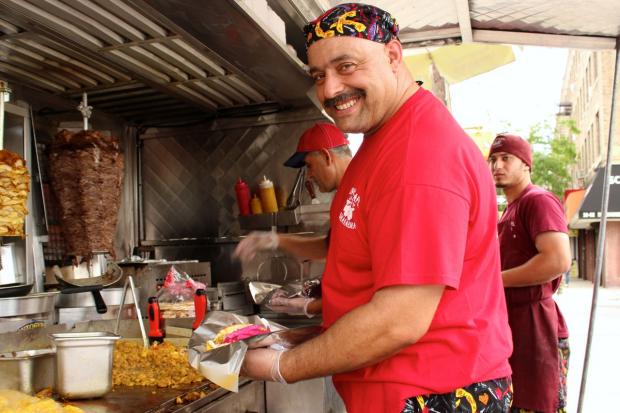
Fares “Freddy” Zeidaies / Courtesy of Dnainfo.com
When he opened his cart in 2002, a falafel sandwich fetched $2 and the chickpeas, the backbone of his Palestinian-style falafel, ran 25 cents a pound. And the imported sesame paste for making tahini sauce, which used to be $30, is now $100. So the price of that sandwich has risen to $4.
“American farmers who used to plant tobacco now plant chickpeas,” Zeidaies says, pointing out the popularity of hummus in the States.
Zeidaies says it’s tough to turn a profit without also selling other items like shawarma, unless you happen to be so lucky you can sell 1,000 or 2,000 sandwiches.
“It’s gotta be like around a college and you’re the only one in there and everybody’s eating falafel,” he says.
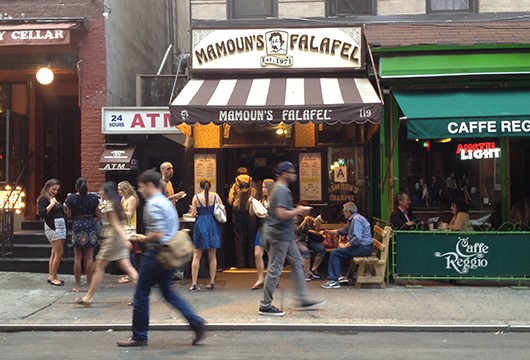
Mamoun’s is popular with students at New York University. / Courtesy of Mamoun's Falafel
This is precisely the situation Mamoun’s Falafel found itself in when it opened 42 years ago, a falafel ball’s throw away from the campus of New York University. When I was just out of college in the mid-‘90s, my roommates and I lived in an apartment in Park Slope, Brooklyn, which was often filled with the aroma of marijuana smoke. Weekly, sometimes daily, outings to Mr. Falafel were a regular part of our post-smoking munchies. Aladin Habib, an Egyptian, opened the restaurant in 1982. Back then, when we were tucking into combination platters, I had no idea his falafel contained both fava beans and chickpeas. All I knew about falafel was that they were good — crunchy, nutty and filling — and cheap.
Once I even tried to make my own falafel with a mix bought from a supermarket. I seem to remember adding just water to the powder, resulting in sticky little balls that I dropped into the hot oil. The dry brown orbs were terrible. It was the first and last time I tried to make falafel. My tahini, however, made with sesame paste purchased from Sahadi’s in downtown Brooklyn, was quite excellent.
3. Combination Platter - Ali's Kabab Cafe
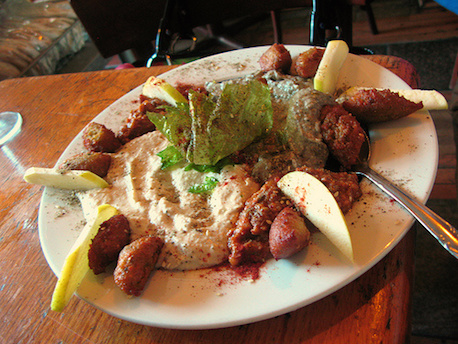
Ali el Sayed, chef-owner of Kabab Café, says falafel should be like a fluffy fritter. / Courtesy of offthebroiler.wordpress.com
Ali el Sayed, the larger than life chef-owner of Kabab Café in Astoria, Queens, would be appalled by my leaden falafel balls.
“Falafel is sort of like fritters,” the Egyptian-born Ali tells me over lunch, “It’s like a soufflé -- it has to be fluffy. It has to have some air inside.”
The first falafel he serves me on a blustery December day as part of a $20 three-course tasting are slightly larger than quail eggs. They are crunchy on the outside, studded with spices, and absolutely revelatory in their lightness. And, like most of my favorite falafel, they are green.
“Egyptians, they add a lot of herbs and spice to their falafel,” Ali points out, “while everybody else in the Middle East they make it simple, straightforward.”
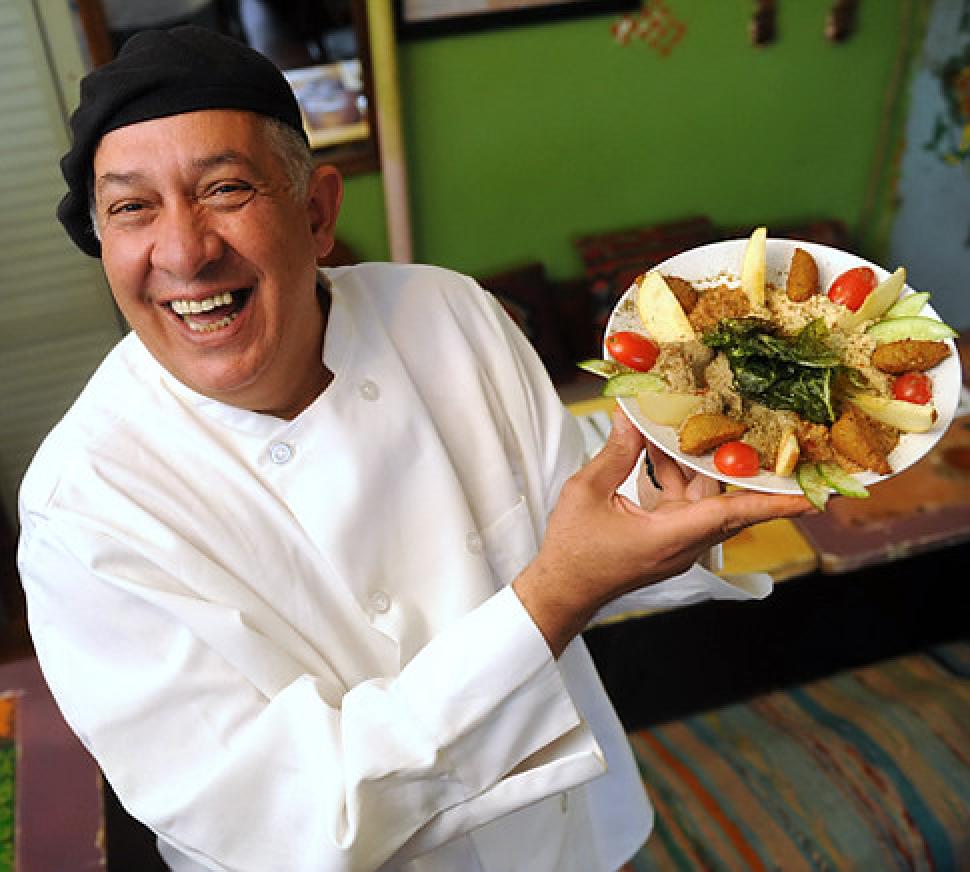
Ali el Sayed, chef-owner of Kabab Café. / Courtesy of New York Daily News
Parsley, coriander, dill, leek, coriander seeds, cumin seeds and touch of cinnamon are just some of the herbs and spices Ali uses to flavor his falafel. My first-ever fluffy falafel was followed by a few sesame-studded ovoids that have tahini mixed into the batter. The nutty falafel were served with a generous slick of tahini for dipping. And then came what to date is the best falafel I have ever had in a restaurant. A single large specimen studded with sesame seeds served with roasted eggplant. It was not just a big falafel but rather a stuffed falafel. Inside was a tasty mix of sautéed onions and shatta, a spicy Egyptian pepper sauce.
“No, no. You can have this in Egypt all over,” Ali responds when asked whether he created the stuffed falafel. He is quick to point out though that creativity in falafel can go too far.
He decries a lobster and falafel dish that Marcus Samuelsson — a chef who’s cooking is better known for Swedish, Ethiopian and Japanese influences than Middle Eastern ones — once created. “It just doesn’t go together,” he said. Whether it goes together or not, the reality of falafel in New York City is that it’s been embraced by many cultures. There’s even a Korean food truck called Kimchi Taco that serves a tofu edamame falafel taco dressed with kimchi-infused refried beans and the Mexican condiment pico de gallo.
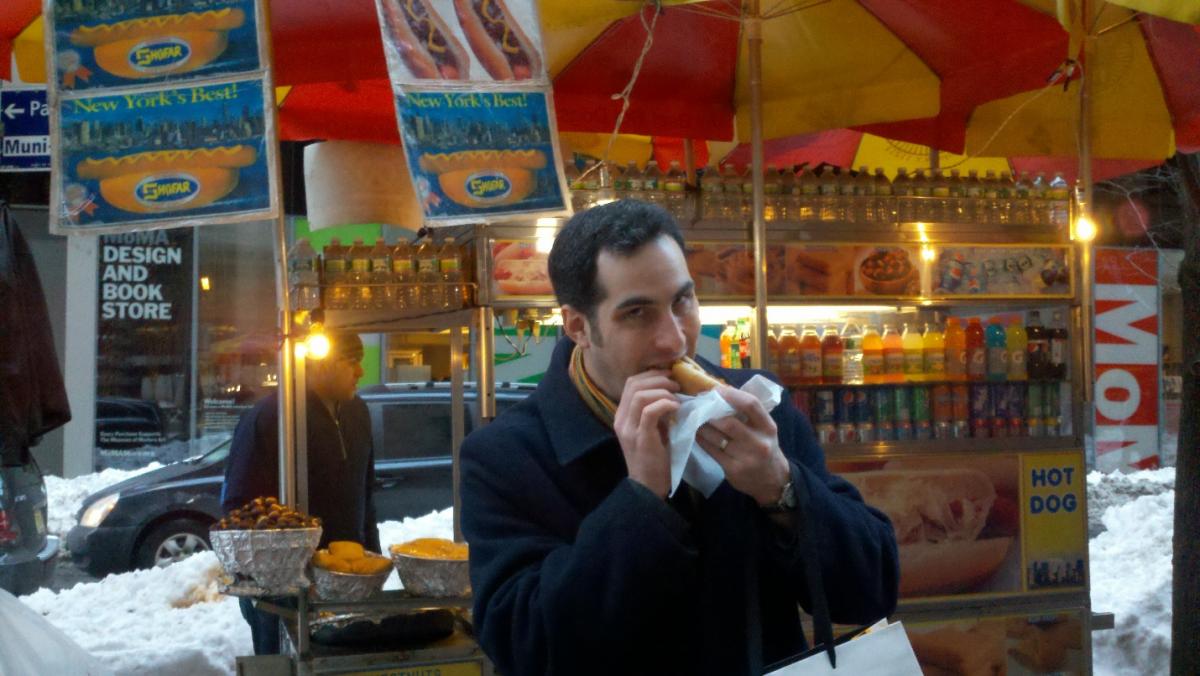
Until the early ‘80s, hot dogs, knishes and pretzels dominated New York street food. / Courtesy of Crispybits.com
Up until the early 1980s, street food in New York City served from carts was dominated by a holy trinity of foods — hot dogs, knishes and pretzels.
“Falafel was pretty exotic. It wasn’t part of the street food culture,” says Gold.
These days hot dogs, knishes and pretzels are fare for tourists. The staple street food for New York City natives is chicken (or lamb and rice) as served by legions of halal vendors that can be found everywhere from Midtown Manhattan to the Chinatown of Flushing, Queens. And like the Israelis did so many years ago, these vendors have adopted falafel as their own. When I approach Sammy’s Halal in Jackson Heights, Queens, and ask for falafel they tell me to go to the next cart over, which is owned by the same outfit. I order a falafel over rice platter and watch in horror as the guy starts to smash pre-fried balls against the flat-top and chop them up with a mixture of cilantro and onions.
“It’s tastier this way,” he says when I question him. “This has no flavor,” he says handing me an unmashed falafel ball. It is dry and generic, lacking any of the wonderful herbaceous nuttiness that is the hallmark of good falafel. It’s still better than the rock hard falafel balls I made that one time. Topped with white sauce, hot sauce and a chutney-like green sauce, the falafel platter is served over basmati rice shot through with whole cloves and other aromatic spices. It tastes more South Asian than Middle Eastern, fusion falafel if you will.
4. Falafel Slice - Benjy’s Kosher Pizza Dairy Restaurant & Sushi Bar
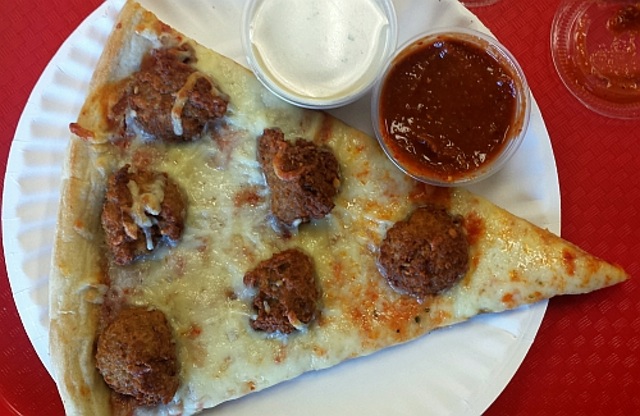
Falafel pizza at Benjy’s Kosher Pizza. / Courtesy of Benjy’s
In Kew Gardens Hills, Queens, home to several Israeli restaurants that serve falafel sandwiches with vast complimentary salad bars that run to 15 items, I find the ultimate New York City street food adaptation of the classic Middle Eastern street food: falafel pizza. “Is that what I think it is?” I ask the guy behind the counter at Benjy’s Kosher Pizza Dairy restaurant and Sushi Bar, as I stare in awe at a slice of New York City pizza gilded with six falafel balls. “Yes, falafel pizza, $3.25,” he responds. Instead of my standard pizza toppings of crushed red pepper and garlic powder, I ask for tahini and hot sauce. It is messy, salty, nutty, crunchy, cheesy and spicy -- exactly what an amalgam of Middle Eastern and New York city street food should be. If there was any doubt in mind as to whether falafel is integrated into the culinary culture of New York City, it is snuffed out by eating this slice of pizza.
Category:
Recommended features by ExtremeFoodies
